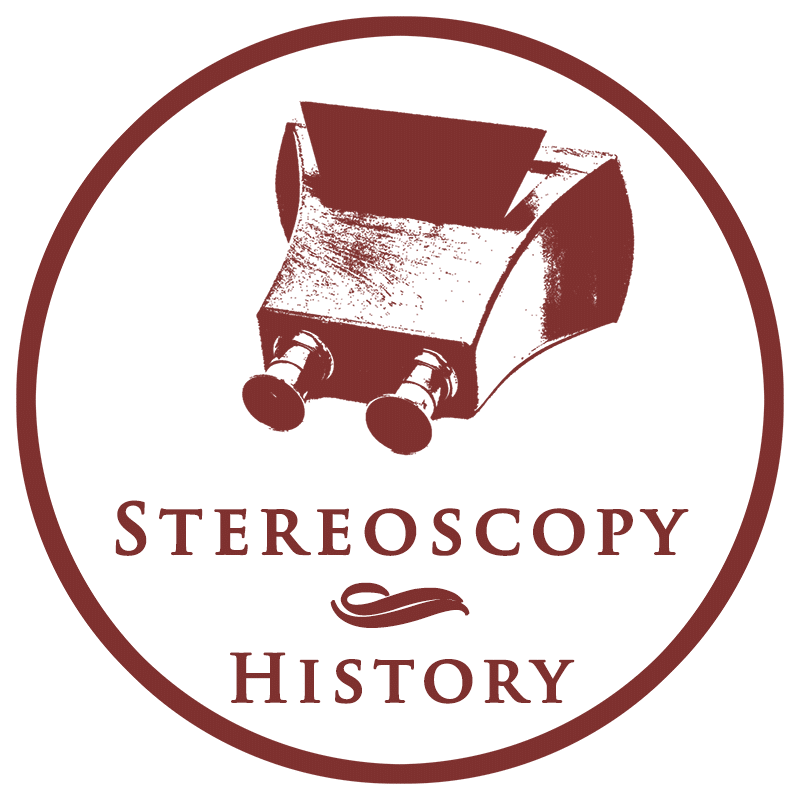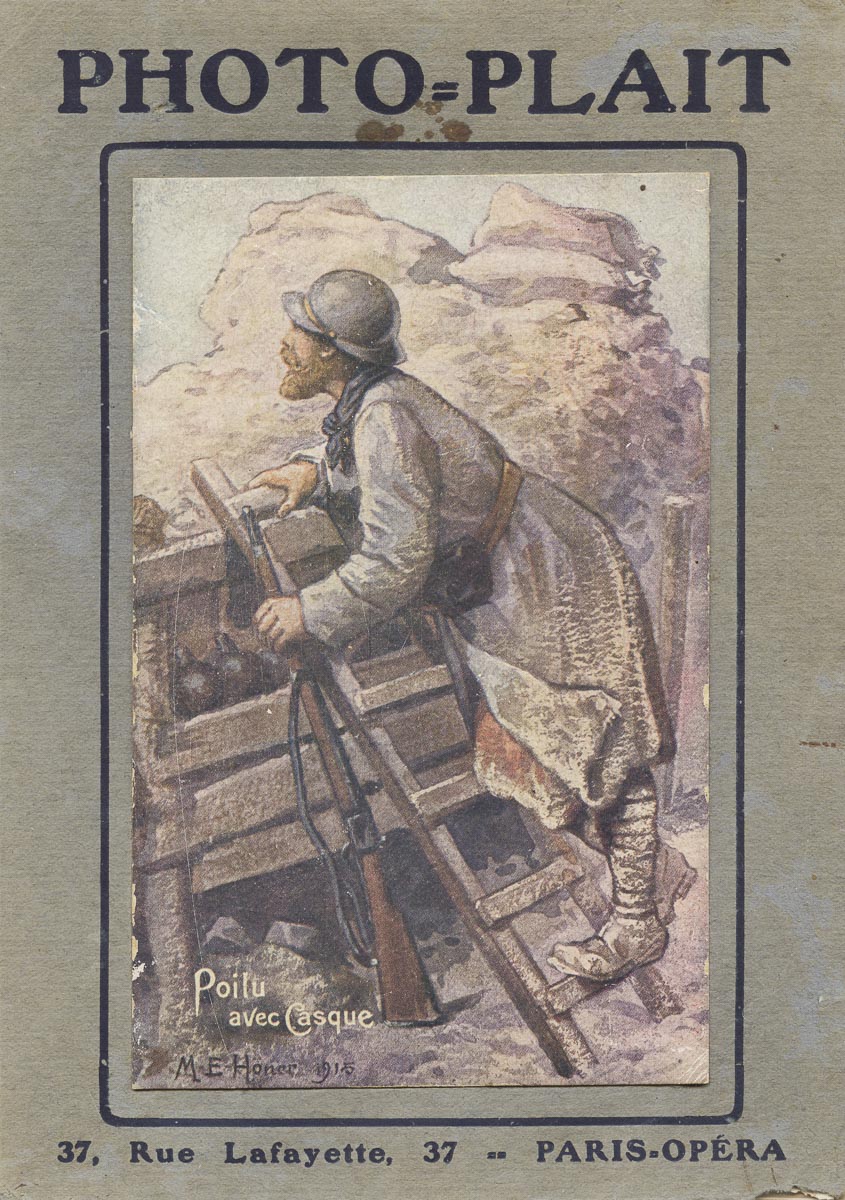
Henri Plait (1881–1976) opened his first photography store at 37, Rue Lafayette in Paris in 1910. Following the outbreak of the First World War, he was mobilised by the French army. He fell ill and suffered from pleurisy, resulting in his dismissal from military service after recovering. Upon returning to his store, he started promoting a camera for the soldiers at the front. The camera he marketed was the Vest Pocket Kodak, a compact folding camera that used film and was easy to carry. The marketing slogan was “Le Kodak du Soldat” (The Soldier’s Kodak). From 1917, Photo-Plait also marketed the Platoscope stereo camera as camera for soldiers. Additionally, Plait provided other services to the soldiers at the front: they could send their negatives by postal service to Photo-Plait, where the negatives would be developed and the printed images would be sent back to the photographer1.
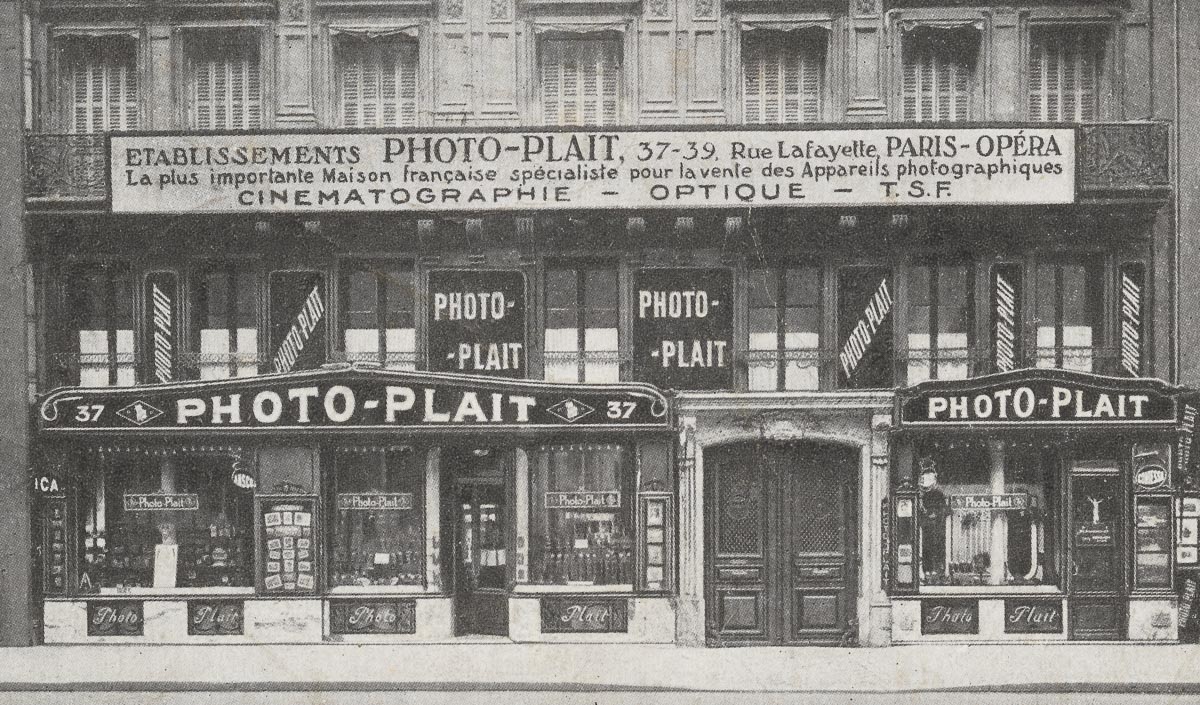
The Photo-Plait catalogue of 1918–1919 included 14 series with 12 glass stereoviews. The slides were manufactured by the publisher La Stéréoscopie Universelle. They could be bought as a series or separately. The individual numbers and titles were listed. A 45 x 107 mm glass slide cost 0.95 francs, and a 6 x 13 cm slide cost 1.20. The same catalogue also showed stereoviews that were not related to the war. These slides were 12% cheaper.
Prices were increased in the Photo-Plait catalogue of 1919. The 45 x 107 mm war slides were 28% more expensive than the non-war slides, and the 6 x 13 cm slides were 36% more expensive. The war views were popular, and sellers could demand a higher price. The market for war stereoviews flourished in the 1920s in France. Many large and small publishers and sellers took advantage of the war stereo craze and marketed their stereoviews to curious buyers and veterans.
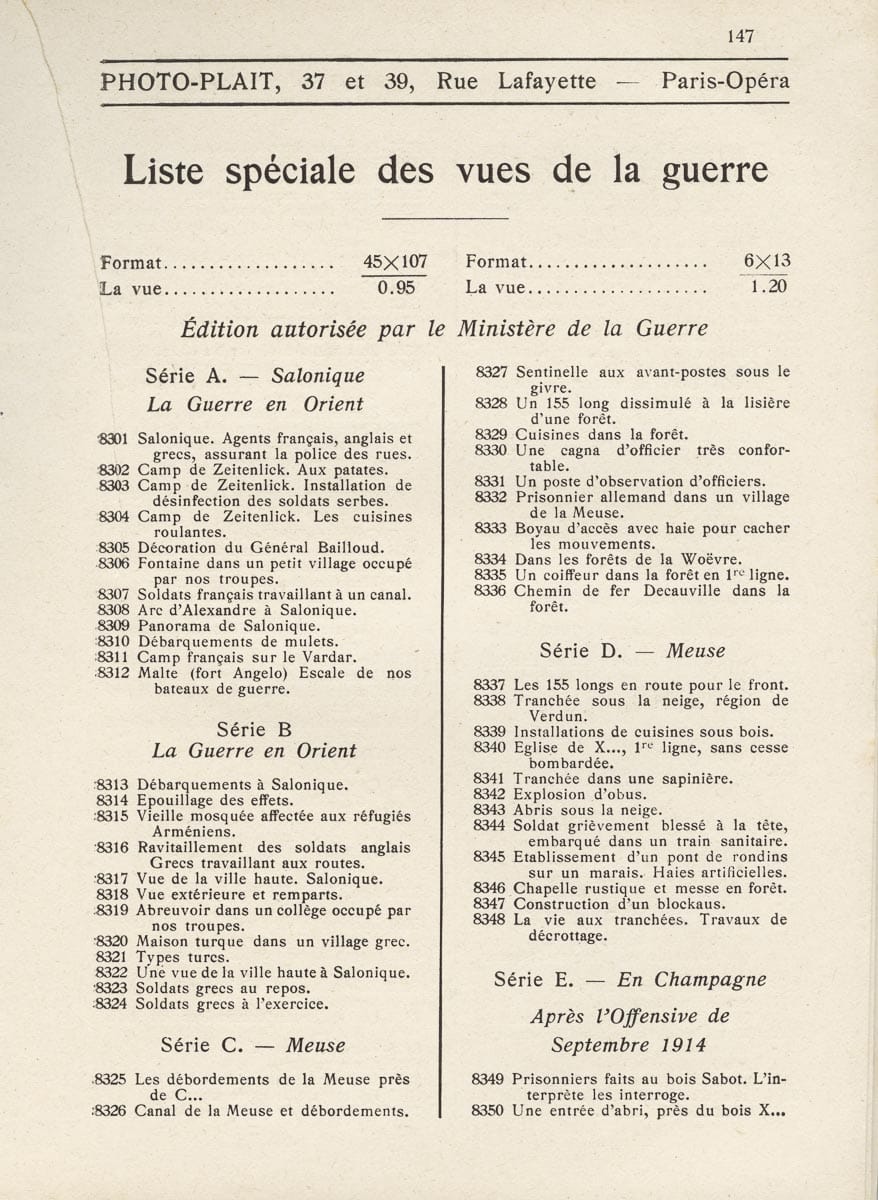
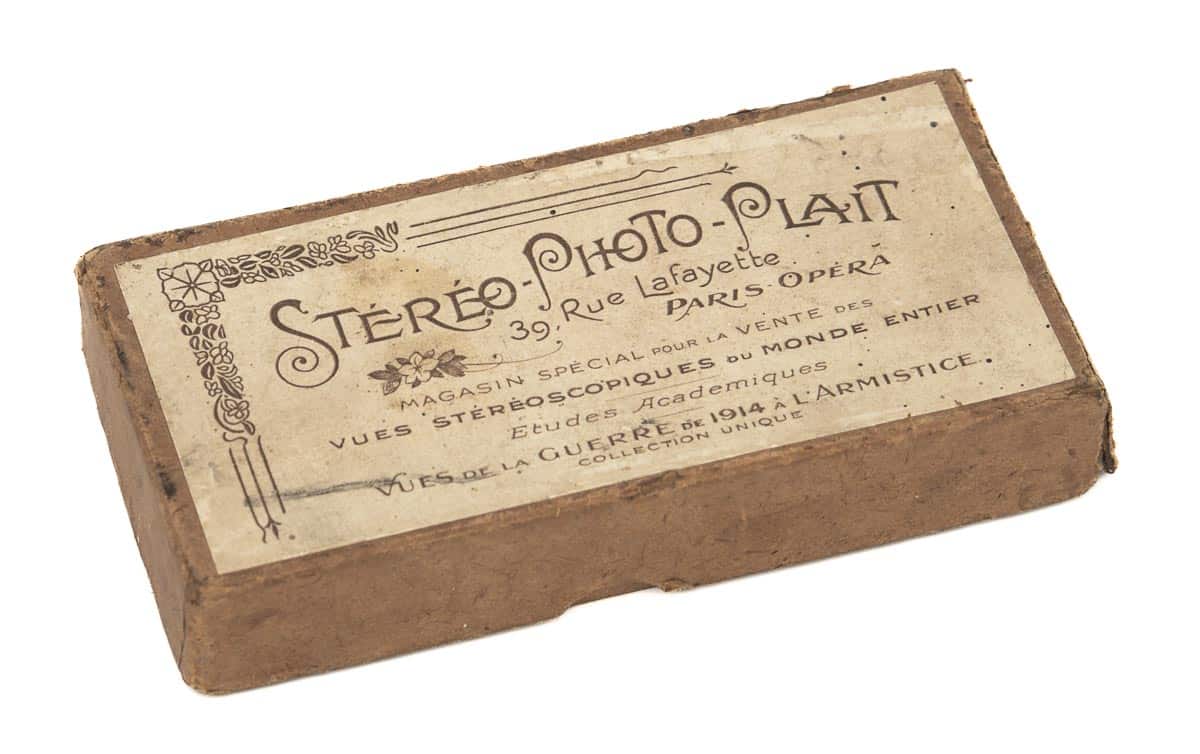
References
- Halgand, S. (2011) Photo-Plait : une petite histoire de la photographie française. Via: collection-appareils.fr ↩︎
